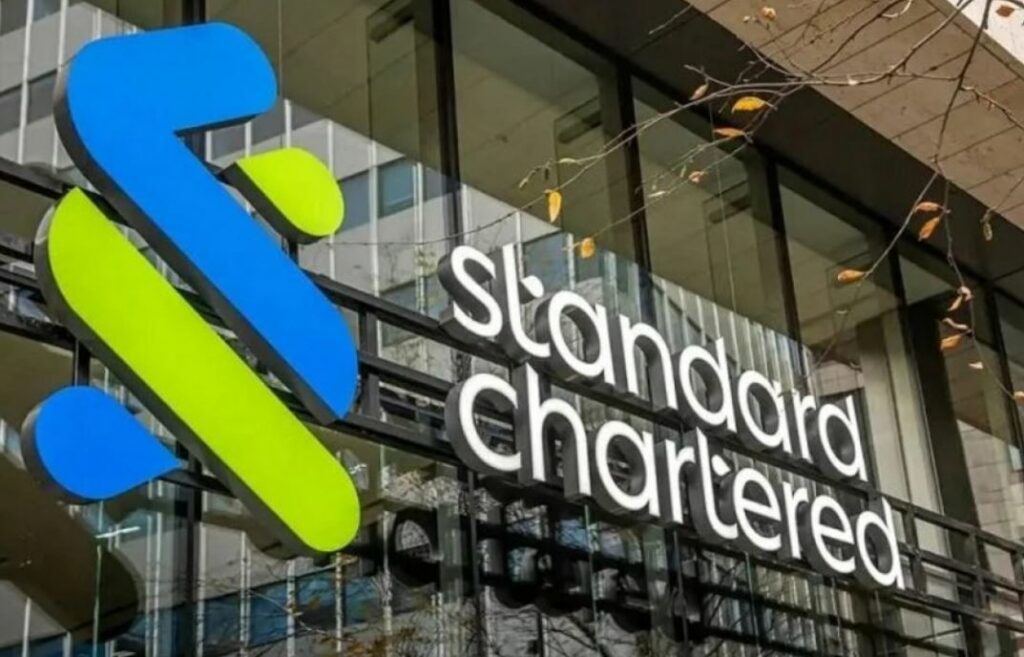
The dream of Bitcoin reaching half a million dollars just became a lot more believable. In a recent report, Standard Chartered Bank doubled down on its ultra-bullish prediction that Bitcoin [BTC] could hit $500,000 before the end of Donald Trump’s second presidential term. What was once considered a far-fetched forecast is now gaining traction thanks to real investment activity from sovereign funds, institutional giants, and state pension systems.
Let’s break down why Standard Chartered is standing firm on its forecast and why investors around the world are starting to agree.

Why $500,000? Inside Standard Chartered’s Forecast
On Tuesday, May 21, Geoffrey Kendrick, Standard Chartered’s Global Head of Digital Assets Research, released an updated report confirming the bank’s previous BTC target of $500K. The timeline? Before the end of Trump’s second term, meaning by January 2029.
According to Kendrick, this prediction isn’t based on wishful thinking. It’s grounded in SEC Form 13F filings, which provide detailed quarterly snapshots of institutional investment portfolios with over $100 million in assets under management (AUM). The latest batch of filings, released this week, shows a clear rise in institutional interest in Bitcoin, especially through indirect exposure via MicroStrategy [MSTR] shares.
What’s in the 13F Filings? A Surge in Sovereign and Institutional Buying
Because many sovereign wealth funds and public institutions still face regulatory hurdles when it comes to holding actual Bitcoin, they often buy shares in companies like MicroStrategy (Nasdaq: MSTR), which holds large amounts of BTC on its balance sheet. These shares act as a proxy for Bitcoin exposure.
Standard Chartered’s report points out several key highlights from the most recent SEC filings:
- France and Saudi Arabia opened new positions in MSTR for the first time ever.
- Existing positions were expanded by sovereign wealth funds from Norway, Switzerland, and South Korea.
- Multiple U.S. state retirement systems, including those in California, New York, North Carolina, and Kentucky, collectively added MSTR shares representing exposure to roughly 1,000 BTC.
These additions are not small moves. They show growing comfort among traditionally conservative institutions toward Bitcoin as an asset class, even if through indirect methods for now.
From Underweight to Optimal Allocation
Kendrick emphasized that most institutional investors are currently underweight in Bitcoin. As regulatory clarity improves and volatility declines, he believes large portfolios will begin shifting toward their optimal BTC allocations.
“As more investors gain access to the asset and as volatility falls, we believe portfolios will migrate towards their optimal level from an underweight starting position in BTC,” Kendrick explained.
This is a crucial point. The $500,000 target isn’t just based on hype or market momentum. It reflects a structural rebalancing — a slow but steady realignment of capital flows into Bitcoin as an accepted long-term store of value.
The latest SEC data is being hailed as one of the most concrete confirmations yet that institutional demand is entering a new phase. Kendrick summed it up clearly:
“The quarterly 13F data is the best test of our thesis that BTC will attract new institutional buyer types as the market matures, helping the price reach our USD 500,000 target level.”
He added:
“When institutions buy bitcoin, prices tend to rise.”
Historically, we’ve seen this pattern repeat. In 2020 and 2021, when companies like Tesla, Square, and Grayscale bought large amounts of BTC, prices responded quickly and aggressively. The growing involvement of state-level funds and international sovereign entities adds an entirely new dimension.

Regulatory Concerns Remain, But Bullish Momentum Builds
Of course, not everything is sunshine and rainbows. Bitcoin still faces regulatory uncertainty, particularly in the U.S., where agencies like the SEC and CFTC continue to spar over jurisdiction. Volatility also remains a concern for large investors used to stable, low-risk portfolios.
However, the shift in sentiment among powerful financial players suggests that these concerns are becoming less of a barrier over time.
Bitcoin’s recent all-time high of over $111,000, reached earlier this week, adds fuel to the bullish fire. The price milestone, combined with official investment filings, tells a compelling story: institutional capital isn’t just dipping its toes in the water anymore — it’s diving in.
A Global Trend in the Making
The geographic diversity of the recent buyers is another bullish sign:
- Europe: France and Switzerland are stepping in.
- Middle East: Saudi Arabia is entering the arena.
- Asia: South Korea is increasing exposure.
- North America: Major U.S. state pension funds are backing BTC.
This spread points to a global shift in asset allocation strategies. As BTC becomes more accessible through ETFs, crypto-tracking equities, and clearer tax rules, the walls separating traditional finance from digital assets continue to crumble.
What Comes Next? Eyes on the Next 13F Filing
Looking ahead, all eyes will be on the next quarterly SEC filings, due in August 2025. If the current momentum continues, it could mark the beginning of a sustained wave of institutional accumulation.
Kendrick and Standard Chartered believe that these filings act as a leading indicator. They show where the smart money is going — and right now, it’s moving into Bitcoin proxies in increasing amounts.
While many critics still call the $500,000 Bitcoin forecast overly optimistic, the latest evidence says otherwise. With sovereign funds, pension systems, and heavyweight institutions slowly but surely building exposure, BTC is no longer a fringe asset.
It’s becoming a mainstay in global investment portfolios.
If this trend continues, the idea of Bitcoin reaching half a million dollars before 2029 may not just be realistic, it might be inevitable.























